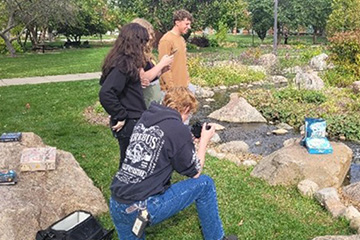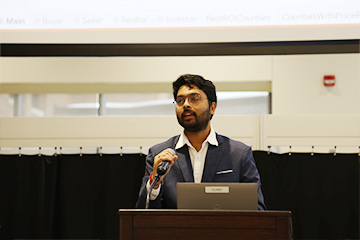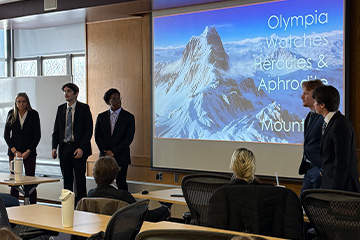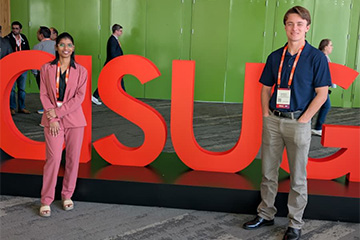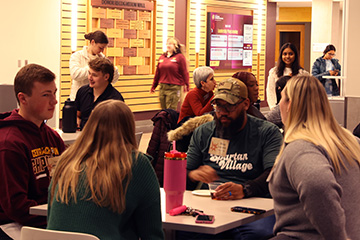Exploring the human side of AI
CMU faculty member Gustav Verhulsdonck reflects on responsible innovation and the future of AI in learning
When Gustav Verhulsdonck traveled to the University of Twente in the Netherlands, he wasn’t just returning to his home country — he was immersing himself in a global conversation about the future of technology and learning.
The opportunity came through his role as a faculty fellow with the University Innovation Fellows program, which is organized by the Hasso Plattner Institute of Design at Stanford D. School and encourages creative problem-solving and design thinking across campus. As part of that fellowship, Verhulsdonck spent a semester at Twente’s DesignLab, where he conducted research on design thinking and artificial intelligence. The collaborative space brings together students, faculty, and community partners to imagine how technology can shape — and challenge — the future.
“I was fascinated by their model,” Verhulsdonck said. “They connect design thinking and futures thinking to sustainability and social responsibility. Their process, called responsible futuring, brings together people from all walks of life to explore what kind of world we want to build, not just what kind of tools we can create.”
That perspective resonated with him. As a faculty member in Central Michigan University’s Department of Business Information Systems, Verhulsdonck teaches business communication and helps students apply design thinking to real-world challenges. His experience in the Netherlands deepened his belief that innovation is not just about speed or efficiency — it’s about values.
“Right now, everyone’s talking about large language models and how students are using AI to generate assignments,” he said. “My question is, how do we develop AI methodologies where students are actually learning to think with these tools — to use AI as a co-thinking partner rather than a crutch?”
A human in the loop
Verhulsdonck describes this moment in history as a “horse-and-cart vs. cars era” for AI — a period of experimentation and adjustment. “We’re figuring out how to be the human in the loop.”
In his view, learning to work alongside AI requires more than technical fluency — it calls for reflection. He explained that when students rely too heavily on AI to complete their work, they risk missing the point of learning itself. “If they can’t explain what it means, that’s not learning,” he said. “They need to recognize when to step back, reflect, and bring their own perspective into the process.”
His research also examines how designers and students interact with AI tools. In one study, he and a colleague observed that users initially embraced generative design programs, then grew frustrated with their limitations before learning to reengage with them in more intentional ways. He described this as a cycle of connection, disconnection, and reconnection — a pattern that reflects the broader challenge of finding balance between automation and human creativity.
Lessons for the classroom
Back at CMU, Verhulsdonck is incorporating what he learned into his teaching. He’s currently using BoodleBox, a collaborative AI writing platform, and Microsoft Copilot to help students engage more critically with the writing process.
He explained that tools like BoodleBox and Copilot can help create learning bots that aren’t meant to replace student work, but to deepen it. They serve as learning guides, helping students ask better questions, refine their ideas, and think through what they want to communicate.
Verhulsdonck believes that understanding AI isn’t optional for today’s students — but neither is critical thinking. “We should engage with AI because we have to shape the future into one we want,” he said. “If we just say, ‘Well, it’s ChatGPT’s world,’ then they get to decide.”
To him, the goal isn’t choosing between humans and machines, but learning how to think with them — preserving reflection, empathy, and curiosity even as technology accelerates. “We’re figuring out how to be the human in the loop,” Verhulsdonck said. “AI might make us faster, but if we don’t stop to reflect, we’re missing what really matters — meaning.”
